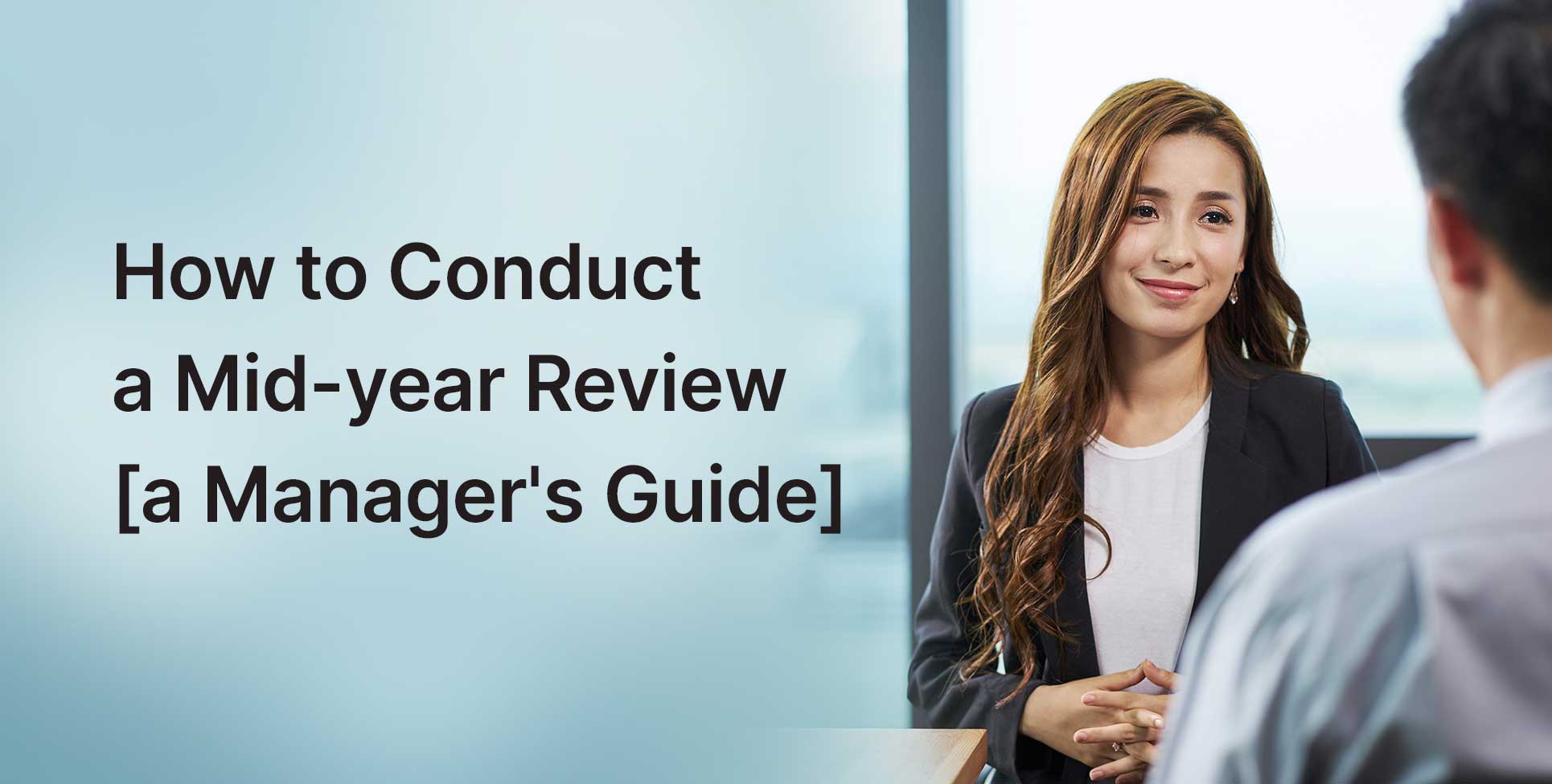To help employees work at optimum performance levels, they need a mid-year review to examine their progress and boost engagement and productivity.
Unfortunately, many companies still miss out on conducting performance reviews and, as a result, experience difficulties in keeping employees in the workplace. 83% of HR officers say they have a hard time retaining employees. Learning how to conduct a mid-year review is the first step to preventing this situation from happening in your organization.
In this article, we'll explain how you can conduct mid-year reviews to evaluate your employee's performance, identify obstacles that stall their growth, and boost their job satisfaction. Let's begin with the basics of a mid-year review.
What is a mid-year review?

Image source: Freepik
A mid-year review is a form of performance review that a manager conducts twice a year to evaluate an employee's performance and set goals for the coming months. When executed well, a mid-year review helps managers provide positive and constructive feedback and development plans to help employees achieve success in their job roles.
Why should you conduct a mid-year review?
Conducting mid-year reviews goes beyond ramping up goals for the year. There are more reasons to conduct a mid-year review. Here are some of them:
1. Opportunity to give meaningful feedback
Meaningful feedback helps employees understand how well they're performing at their jobs. If there are areas where they need to improve, your actionable feedback can help employees to make necessary changes to improve their skills and job performance.
2. Improve employee engagement experience
Mid-year reviews allow you to help employees identify areas they can do better in their jobs. For instance, performance review data can motivate employees to achieve more goals in the workplace.
3. Ensure employees have achievable goals
Mid-year reviews enable your company to have the ideal goal-setting framework. Rather than allow employees to become complacent, you can use performance reviews to help them understand the overall long-term objectives and how to achieve success in the company.
Setting goals helps them to be laser-focused while being mindful of the future.
4. Review employee performance
A mid-year review allows you to check in with your employees, analyze their performance, and gather information about how they feel about their job experiences. With this information, you can gain insight into employee engagement and identify ways to help them grow professionally.
How to conduct an effective mid-year review
When done correctly, mid-year performance reviews focus on the right questions, produce meaningful feedback, and strengthen relationships with employees. Here are the best tips to help you conduct an effective mid-year review.
1. Create a meeting agenda
You must create a meeting agenda to get the best out of mid-year performance evaluations. A well-prepared agenda creates structure and can keep you and your employees focused throughout the review process.
So what should you include in your mid-year review?
Here are some examples of must-haves in your mid-year review agenda:
- An outline of the key points you'd like to address
- A recap of the review from the last six months
- A discussion about how employees have met or exceeded their goals
- Employee's perspective on the company's values and management
- Framework for setting new short and long-term goals
2. Define performance criteria

Image source: Freepik
During mid-year and yearly performance reviews, highlight specific metrics for employee performance based on the employee's job roles and responsibilities.
To put this into context, let's see some example criteria:
- A customer service rep should aim to answer 20 calls per day
- Sales associates should strive to make $150,000 in sales
3. Gather all the necessary data
Reflecting on past assessment data can help direct the review process flow. Ensure you leverage past employee reviews like 360-degree and peer revews as reference points to help you set ideal standards for your mid-year review.
4. Prepare constructive feedback
Constructive feedback should help employees know areas they can improve on. When providing feedback, avoid vague statements that may not be valuable to the employee.
For instance, instead of telling a sales associate to do better at their job, you can offer specific and constructive feedback like this: "We noticed you were 20% lower in sales in the last review period. Try increasing your sales by 25% by expanding your territory."
5. Choose the right mid-year performance review questions
Choosing the right mid-year review questions can help employees reflect on their progress and identify ways to make their year successful. Here are the key questions to ask during mid-year performance reviews.
Mid-year performance review questions
- How would you rate your performance on a scale of 0-5 and why?
- What specific accomplishments are you most proud of in the past year?
- What can the company do to support your skill advancement?
- What are your expectations from this role moving forward?
- What are your top key development goals?
- What are the top three challenges hindering your success?
6. Book the meeting in advance
It's essential to book the review process in advance so employees can have enough time to prepare. Also, send them discussion points they can reflect on before the review meeting begins. This way, the employee knows what to expect and won't be surprised by your questions.
7. Make it a two-way conversation
The best mid-year reviews feel more like a two-way conversation and less like a drilling session. In other words, focus on connecting with your employees by allowing them to express their thoughts and concerns. This will help you better understand how they feel about their job experiences.
8. Create a development plan
After evaluating your employee's performance and providing actionable feedback, what comes next? You must create a development plan that outlines how your team can implement positive changes in their jobs and careers.
A development plan should cover:
- The employee's skill development within the current role
- The employee's skill development for career advancement
Conclusion
Mid-year performance reviews focus on using open-ended questions, constructive feedback, and well-prepared development plans to help employees reach their full potential.
This strengthens team relationships and reduces the chances of low employee engagement and productivity in the workplace.
Applying the tips and best practices to conduct a successful mid-year review can make the mid-year review process a productive and positive experience for you and your employees.
FAQs
How do I prepare for a mid-year review?
You can prepare for a mid-year review in the following ways:
- Create a meeting agenda
- Set the right performance metrics for employees
- Gather all past performance review data
- Book the review meeting in advance
- Choose the right mid-year performance review questions
What is the difference between a mid-year review and an annual review?
A mid-year review is a form of employee performance evaluation conducted every six months. An annual review is a traditional form of performance review conducted once a year to evaluate an employee's skills, achievements, and contributions to the company.
How do you set goals for a mid-year review?
Here are some ways to set goals for a mid-year review:
- Allow employees to set goals that align with their job roles
- Have employees put down their goals in writing, so they can refer back to them during the year
- Ensure employees set goals that are specific and attainable
What questions should I ask in a mid-year review?
The key questions to ask during mid-year reviews include:
- Is there another role you see yourself in at this company?
- What are the biggest challenges you're facing?
- What are the top three goals you want to accomplish in your career?
- How can the organization provide support to improve your career and job performance?






